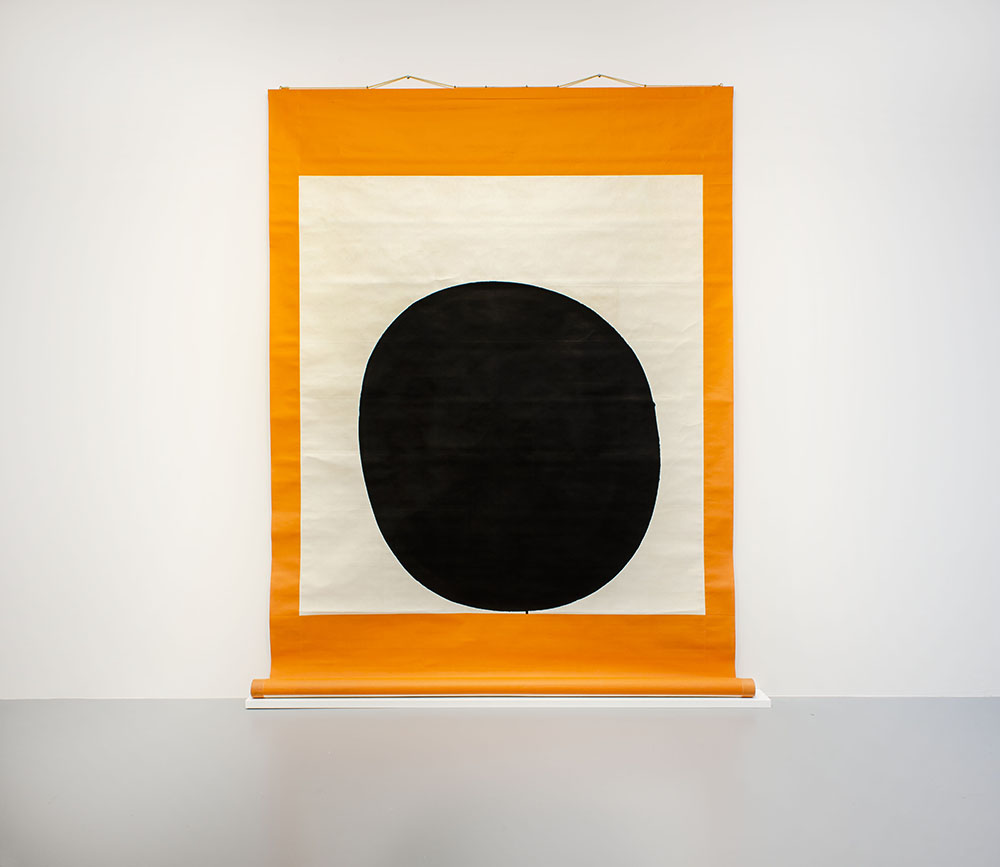ART-PRESENTATION: James Lee Byars-The Perfect Kiss
 The performance and installation artist James Lee Byars challenged the post-war art world with a poetic attitude animated by three separate motifs: the question, perfection and death. His search for utter purity of intention and expression was bolstered by a desire to form a direct, and thus impersonal, understanding of the world, in this way transcending the Western romantic notions of self-expression and genius. His oeuvre is an idiosyncratic mix of the meditative, the theatrical, the participatory and the aesthetically ‘perfect’.
The performance and installation artist James Lee Byars challenged the post-war art world with a poetic attitude animated by three separate motifs: the question, perfection and death. His search for utter purity of intention and expression was bolstered by a desire to form a direct, and thus impersonal, understanding of the world, in this way transcending the Western romantic notions of self-expression and genius. His oeuvre is an idiosyncratic mix of the meditative, the theatrical, the participatory and the aesthetically ‘perfect’.
By Dimitris Lempesis
Photo M HKA Archive
Presenting more than one hundred works, “The Perfect Kiss” is the first retrospective exhibition by James Lee Byars in Belgium. The title of the exhibition refers to a performance that was presented frequently and worldwide, including in Brussels (1974) and in Antwerp (1976), and forms an inviting gesture after the “Greetings from the Eurasian” exhibition of 2017 which examined Joseph Beuys’ activities in Antwerp. This retrospective presents works in different genres and media (painting, sculpture, installation, video, performance and text), with a focus on Byars’ presence in Belgium from 1969 to 1994, with works such as “Two in a Hat”, “Mask and Dress”, “75 in a Hat”, “A Pink Silk Airplane for 100” and “The World Question Center” (all from 1969), “The Black Book” (1971) and “The Perfect Love Letter” (1974). The beating heart of the exhibition is a selection of never-before-seen letters from Byars to his friends in Belgium. The work of James Lee Byars can impossibly be categorised into a specific artistic movement or discipline. He employed performances, sculptures, mail art, drawings, installations and many more to construct his ideas. In his art he explored timeless, but difficult to visually concretize concepts like beauty, perfection, death, philosophy and spirituality. To help him manifest these ideas he used round numbers like 100, 100 000, geometric figures, especially circles and spheres and precious materials, like gold and marble. In his search for perfect beauty he is concerned about an idea, not for individual objects. Byars thus presents his art in an interrogative manner. He raises the question, if it is possible for these things to really exist, or would we be better of without them? Questions can also literally form the subject of his work. For instance in the performance “The World Question Center” (1969) he collected a number of questions posed by a number of prominent intellectuals. James Lee Byars’ actions perpetually have a ceremonial nature, where his presence, as orchestrator of the event is decisive. At the root of these remarkable “events” is his fascination for Japanese culture and philosophy, more specific the expressive shinto-rituals. The city of Antwerp played no small part in the development of these performances. Byars traveled for ten years between New York and Kyoto before arriving in Europe in 1969, invited by Anny De Decker and Bernd Lohaus for an exhibition at the Wide White Space Gallery in Antwerp (18/4-7/5/1969), he quickly became part of a group of artists and art lovers around this groundbreaking gallery – Joseph Beuys, Marcel Broodthaers, Jef Cornelis, Nicole and Herman Daled, Isi Fiszman, and many others – and became a prominent figure in the European art scene with participations in five documenta’s from 1972 until his death. In 1976, Flor Bex organized the first comprehensive investigation into Byars work at the Antwerp International Cultural Center (ICC). It contained the collective performance “The Shadow of an Extraterrestrial Man” of which the prop (also known as “De Zwarte Reus van Antwerpen”, is now one of the central works in the collection of the M HKA. This work has obviously been included in the exhibition
Info: Curator: Lotte Beckwé, M HKA – Museum of Contemporary Art Antwerp, Leuvenstraat 32, Antwerp, duration 5/10/18-20/1/19, Days & Hours: Tue-Wed & Fri-Sun 11:00-18:00, Thu 11:00-21:00 www.muhka.be










